You are viewing 1 of your 1 free articles
Variable crossing and finishing practice
The principles of quick, positive and clever attacking and defending processes are the same at any level. That’s why we’ll run this session exactly the same way in the Premier League next season as we did in the Championship this.
| Area | Up to half pitch |
| Equipment | Balls, cones, goals |
| No. of Players | 18 |
| Session Time |
Warm-up (with the fitness coach 10mins), two box game 30mins, 7v7 game 10mins, 9v9 game 15mins |
The principles of quick, positive and clever attacking and defending processes are the same at any level. That’s why we’ll run this session exactly the same way in the Premier League next season as we did in the Championship this.
It’s an ideal session for a Thursday, when we’re looking to build intensity in time for the weekend. The sharpness of this practice leads into shape-based training on the Friday, then the match the next day. We’re not afraid to run this every week, because practice makes permanent.
It’s a good session for building confidence, and we saw this practice really come to fruition in our crucial 3-1 victory at Southampton in April, a result that all but secured us promotion back to the Premier League. Jimmy Kebe burst down the right and centred for Jason Roberts, who fired home in style.
What do I get the players to do?
Passing and possession warm-up
We start with a 6v3 possession game played in the space between the side of the penalty box and the touchline (1). The team of six must retain possession for 90-second periods. Good tempo is essential, with precise passing and lots of movement. We then rotate teams. To progress, if the team of three wins the ball they can break out of the square.
1
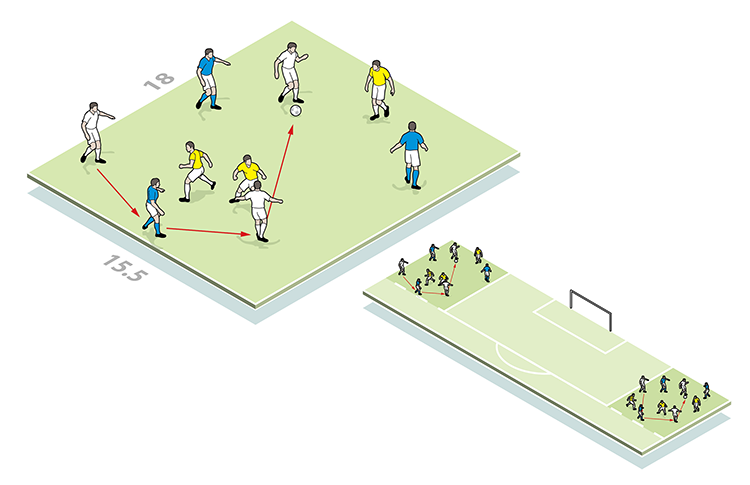
Two-box game
We now put two penalty boxes together, and set up players as shown (2a ). From the first pair, the left-hand player combines with the left-sided attacker, who touches the ball back for the inrushing right-side player. One- or two-touch, he feeds the right-side winger, who advances and crosses.
2a
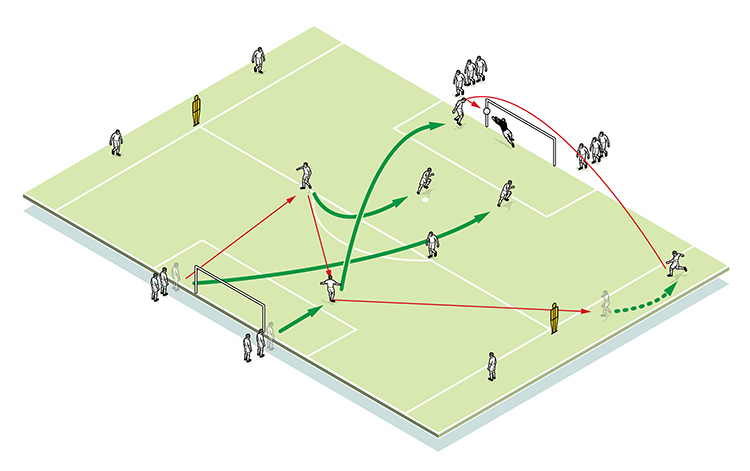
Infield players continue their runs looking to score in the goal - one near post, one far, one positioning himself for a cutback. Next come back the other way. On the next phase, play is sent to the opposite flank. Rotate players regularly.
Throughout, we expect quality passing and good tempo, given that this is unopposed. Strikers are encouraged to finish one-touch, and must stay onside. Wingers must vary types of crosses.
To progress, use two wingers to produce overlaps (2b). Play for a further 10 minutes. Next, allow the receiving attackers to play instinctively, without having to feed the winger. Players must still display good variations in passing, receiving and movement (2c).
2b

2c
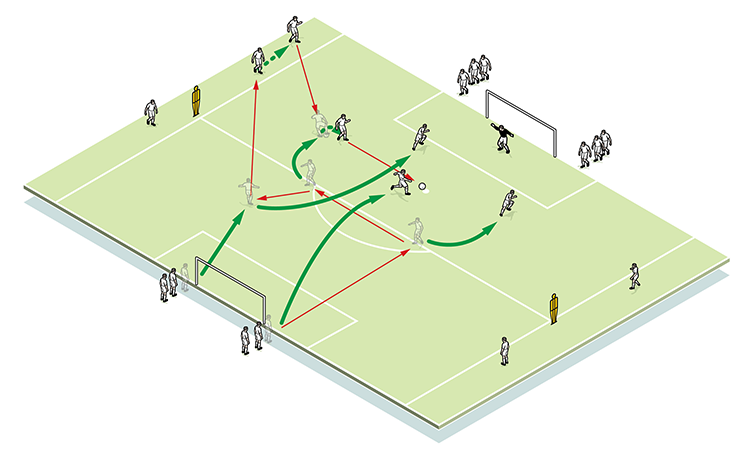
7v7 Infield game
Keepers start, with teams having to construct forward moves using a wide player. Opponents will attempt to block routes to the wide men, so patience and intelligence must be shown. The receiving winger has two touches, and his opposite winger can come infield to create an 8v7 overload, but is one-touch. There are no offsides (3).
3
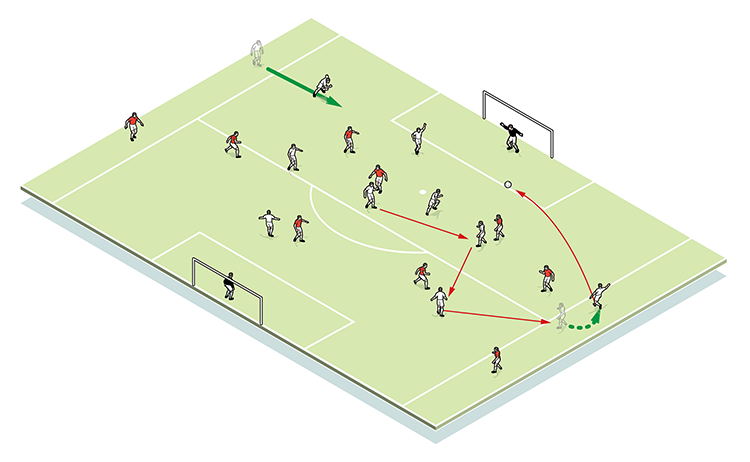
9v9 game
Now we run a standard 9v9 game on a half-pitch - channels are 2v1 in favour of the attacking team. The lone defender must slow movement, ensuring he stays communicates well with fellow defenders (4).
4
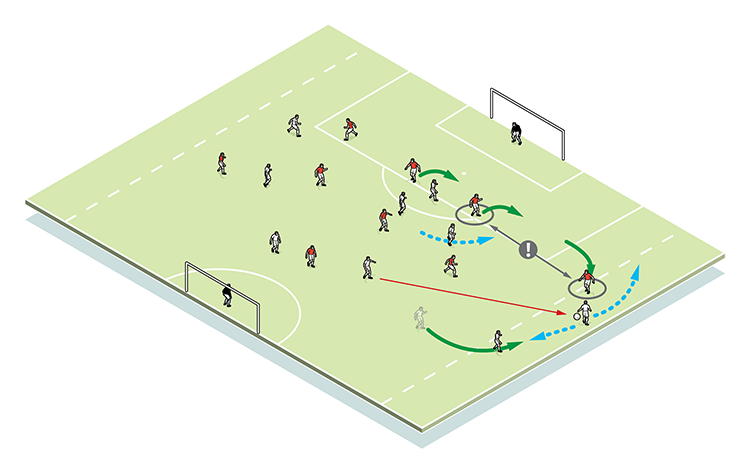
Related Files
Editor's Picks
Intensive boxes drill with goals
Penetrating the final third
Creating and finishing
My philosophy
Pressing initiation
Compact team movement
Defensive organisation
Back three tactics
Counter-pressing as an offensive weapon
Coaches' Testimonials

Alan Pardew

Arsène Wenger

Brendan Rodgers

Carlos Carvalhal

José Mourinho

Jürgen Klopp

Pep Guardiola

Roy Hodgson

Sir Alex Ferguson

Steven Gerrard
Coaches' Testimonials

Gerald Kearney, Downtown Las Vegas Soccer Club

Paul Butler, Florida, USA

Rick Shields, Springboro, USA

Tony Green, Pierrefonds Titans, Quebec, Canada
Join the world's leading coaches and managers and discover for yourself one of the best kept secrets in coaching. No other training tool on the planet is written or read by the calibre of names you’ll find in Elite Soccer.
In a recent survey 92% of subscribers said Elite Soccer makes them more confident, 89% said it makes them a more effective coach and 91% said it makes them more inspired.
Get Monthly Inspiration
All the latest techniques and approaches
Since 2010 Elite Soccer has given subscribers exclusive insight into the training ground practices of the world’s best coaches. Published in partnership with the League Managers Association we have unparalleled access to the leading lights in the English leagues, as well as a host of international managers.
Elite Soccer exclusively features sessions written by the coaches themselves. There are no observed sessions and no sessions “in the style of”, just first-hand advice delivered direct to you from the coach.








